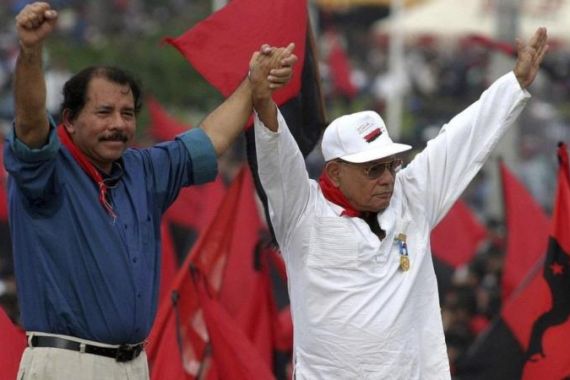Surviving founder of Sandinista movement dies
Tomas Borge, one of nine founders of the leftist movement that toppled government of Nicaragua, dies at age 81.

Tomas Borge, the last surviving founder of the leftist Sandinista movement in Nicaragua has died aged 81.
Borge helped to create the Sandinista National Liberation Front (FSLN) in 1961, serving as interior minister after the 1979 revolution that toppled US backed dictator Anastasio Somoza.
The former guerrilla fighter, considered one of the hardliners in Daniel Ortega’s government in the 1980s, was hospitalised earlier this month for a lung infection and was moved to intensive care after complications from surgery.
“It is with profound sorrow that we announce the end … of the fruitful life of the revolutionary Tomas Borge,” government spokeswoman Rosario Murillo, who is also the wife of Ortega, the current president, told local radio late on Monday.
Murillo did not disclose the cause of death.
Borge helped found the FSLN and was jailed for plotting to overthrow the right-wing Somoza in the 1950s.
The organisation was named after Augusto Cesar Sandino, who fought against US intervention in Nicaragua in the 1930s.
Borge was among the nine Sandinista leaders who first put Ortega in power after the revolution.
Cuba-trained guerrilla
US President Ronald Reagan saw the Sandinistas as a threat and backed the right-wing Contras in a decade-long civil war that killed around 30,000 people and wrecked the Central American nation’s economy.
Ortega and the Sandinistas were voted out of power in 1990 but have since returned to power, winning a landslide re-election last November.
Borge, born on August 13, 1930, into a poor family, dedicating himself to the struggle against the Somoza family, which had run Nicaragua for 40 years.
He received military training in Cuba before he helped to found the Sandinista movement.
He served as a congressman and ambassador to Peru and Ecuador, later moderating his more extreme leftist views and even backing free trade deals in the region with the United States.
He also wrote several books.
In the late 1990s he was drawn into a sexual abuse scandal that tarnished the reputation of top Sandinista leaders, when a female party member accused him forcibly of kissing and touching her when she worked as his interpreter.